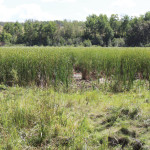
Tag Archives Aquatic ecology

Forum to fight aquatic invasive species
The advisory group is the latest in Manitoba’s AIS measures
Wetland restoration in Pembina Valley ‘a rarity,’ said CD officials
About 160 acres have been converted back to wetland after the landowners farming it saw more advantage using the acres to hold water than farming it at a loss

Early bloom raises algae poisoning concerns
The blue-green algae can be harmful or fatal to humans and livestock

Wetland restoration relies on farmer participation
MHHC is seeking more landowners interested in wetland restoration on their property, something that can benefit them and those downstream

Prairie water woes need collective action, not more words
Excessive moisture and flooding in recent years have compounded the threat to Prairie lakes

Fertilizer run-off is just one piece of the dead zone puzzle
More perennial crops and protecting wetlands would help reduce the low-to-no-oxygen zone in the Gulf of Mexico

Creating environmentally literate citizens
A new educational site is being developed in Rivers, Man., with the goal of immersing youth in natural surroundings to instil the importance of environmental issues

Retirement project reinforces need for conserving natural land
Retired dairy farmer Gord Hammell is redoing a breeding bird survey he did in the 1970s, documenting changes to local land, water and wildlife

Wetland count begins in southwestern Manitoba
Project will reveal distribution and interaction of wetlands in agro-Manitoba


